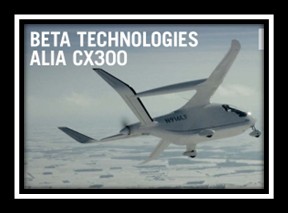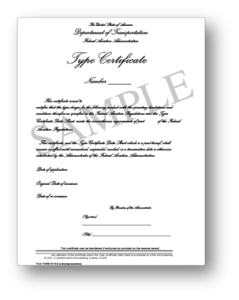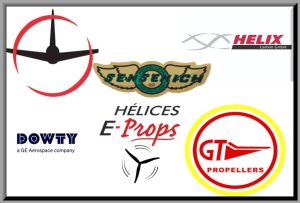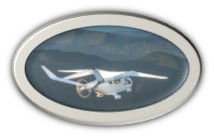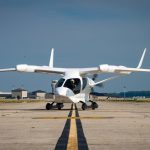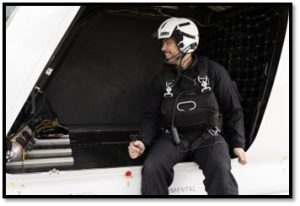FAA issuance of Part 35 Type certificate shows that it can be done
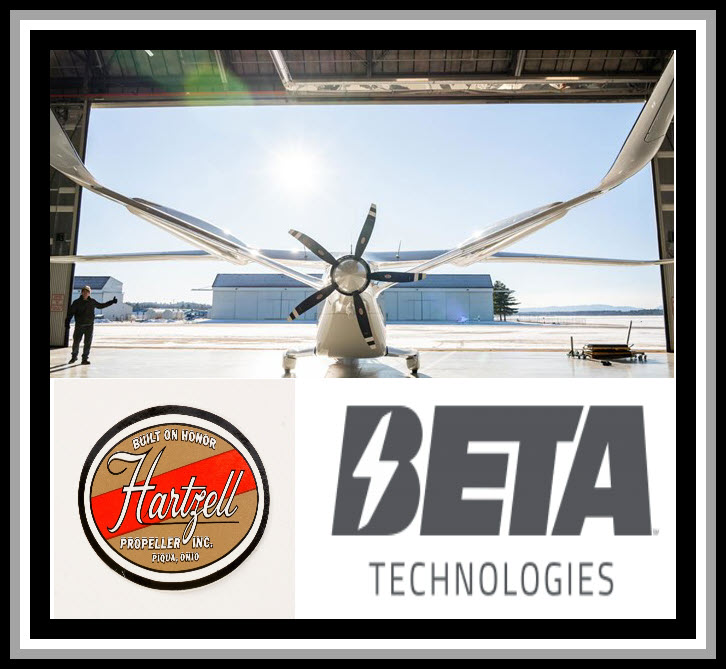
Every inch of movement to reducing aviation carbon emissions is an important milestone. Below is a through analysis of such a success accomplished by HARTZELL PROPELLER and its certification partner BETA TECHNOLOGIES. Using a BETA Alia CX300 as a test bed, Hartzell received an FAA Part 35 Type Certificate. The article states that this is the first such award for a propeller designed specifically for propulsion by an electric powerplant.
FAA Part 35 type certification requires a long lists of tests of the propeller. This involves a long list of tests requiring
| · Centrifugal Load Test (§35.35) | |
| · Bird Impact (§35.36) | . |
| · Fatigue Evaluation (§35.37) | |
| · Lightning Strike (§35.38) | |
| · Endurance Test (§35.39) | |
| · Functional Test (§35.40) | |
| · Overspeed & Overtorque (§35.41) | |
| · Control System Components (§35.42) | |
| · Hydraulic Components (§35.43) |
Issuance of the Part 35 TC signifies that this propellor met or exceeded tests designed to ensure that they are airworthy (safety, performance, and durability).
Although designed for Beta’s aircraft, this airworthiness determination should be a basis for its use on other AAM aircraft with similar electric propulsion systems. Beta is also using the propeller for its Alia 250 eVTOL model
The TCed Hartzell propeller is mounted on the aft end for forward propulsion, and they are powered by Beta’s own H500A electric engines. The eVTOL model has four additional two-bladed, top-mounted vertical lift propellers, each powered by a Beta V600A electric motor. BETA intends further use of this Part 35 TC on the Alia CX300 and Alia 250 both of which will have single Hartzell propellers mounted on the aft ends for forward propulsion, again the thrust wthe the same Beta H500A electric engines. The eVTOL model has four additional two-bladed, top-mounted vertical lift propellers, each powered by a Beta V600A electric motor.
Beta plans to obtain TCs for the Alia CX300 this year, followed by the Alia 250 eVTOL in 2026. The company is currently conducting for-credit certification testing with the FAA. It has been conducting extensive, real-world flights with the Alia CX300 under a market survey provision permitted by the special airworthiness certificate rules.
One small step, but as the above review suggests, the Hartzell TC will be mounted on multiple electric aircraft. Equally, this achievement will motivate other powerplant manufacturers to advance their proposed propellers. We are available to assist in the FAA process for any enterprise with a propellor design requiring Part 35 approval.
- Hartzell Propeller – United States (est. 1917)
- McCauley Propeller Systems – United States (est. 1938)
- MT-Propeller Entwicklung GmbH – Germany (est. 1980)
- Sensenich Propeller Manufacturing Co. – United States
- Dowty Propellers – United Kingdom (part of GE)
- Collins Aerospace – United States (RTX Corporation)
- DUC Hélices – France
- Airmaster Propellers – New Zealand
- Catto Propellers – United States
- Helix Carbon GmbH – Germany
- Ivoprop Corporation – United States
- Warp Drive Inc. – United States
- GT Propellers – Italy
- Electravia – E-PROPS – FranceHartzell Earns FAA Type Certificate for First Part 35 Electric Engine Propeller
July 21, 2025
Hartzell Propeller has received FAA Part 35 Type Certification for the first propeller designed specifically for advanced air mobility (AAM) aircraft.
The company worked with aerospace company BETA Technologies to achieve this, conducting all testing of its propeller on BETA’s proprietary electric propulsion systems (electric engines), which are designed and manufactured in-house by BETA.
Hartzell’s propeller is the FIRST TO EARN FAA TYPE CERTIFICATION SPECIFICALLY FOR INTEGRATION WITH ELECTRIC PROPULSION SYSTEMS. These systems, like BETA’s, are capable of managing a wide range of different loads and conditions—from regenerative braking to startup.
The approval comes AFTER THOUSANDS OF HOURS OF GROUND AND FLIGHT TESTING OVER FOUR YEARS and verifies that the propeller exceeds the performance and safety standards[1] of FAA Part 35.
This is an endorsement from the FAA of the efficacy and safety of Hartzell’s propeller, as well as the performance of BETA’s electric engines, which provided the foundation for its testing.
“Hartzell Propeller is very pleased to work with BETA Technologies on this AAM breakthrough development,” said Hartzell President JJ Frigge, “Our design specifically for BETA Technologies is a five bladed, carbon fiber, ground adjustable fixed pitch propeller that will have FUTURE APPLICATIONS FOR THE ENTIRE AAM INDUSTRY.”
Hartzell and BETA have worked on the propeller development since 2021, from initial aerodynamic modeling and design to full-scale testing and validation. The result is a high-performance, low-noise propeller tailored specifically for electric engines and this next generation of aviation.
BETA will utilize Hartzell’s propeller to optimize the performance and safety profile of both its ALIA VTOL and ALIA CTOL aircraft. The propeller is also built to serve all AAM aircraft that utilize similar electric propulsion systems.
“With its decades of experience across all types of aircraft, Hartzell Propeller has understood from the beginning the unique challenges and opportunities of electric aviation,” said Kyle Clark[2], founder and CEO of BETA Technologies.
Clark added, “Their engineering precision and deep certification experience have assisted us as we bring this aircraft to market and walk through our own certification steps. We’re proud to have been their counterpart on this project and look forward to getting this certified propeller in the air as we continue the process of certifying our electric engines, as well as our ALIA CTOL and VTOL.”
Kyle Clark is not only CEO of Beta Technologies,
he’s also one of its test pilots. Here, Clark prepares
to fly one of the company’s two all-electric prototype aircraft.
Beta Technologies
BETA has been flying its ALIA CTOL and ALIA VTOL aircraft with Hartzell’s propellers for more than four years, including completing the industry’s first crewed transition of an eVTOL and several long-range flights with its fixed-wing, including a coast-to-coast trip across the U.S. and now a Grand Tour of Europe.
[1] Copilot AI: FAA Part 35 outlines the airworthiness standards for propellers, focusing on both performance and safety. Here’s a breakdown of the key requirements:
️ Performance Standards
- Propeller Ratings & Operating Limits (§35.5)
- Must be established by the applicant and approved by the FAA
- Include power and rotational speed for takeoff and maximum continuous operation
- Overspeed and overtorque limits must be defined
- Functional Testing (§35.40)
- Includes pitch control cycles, reverse thrust operation, and feathering tests
- Ensures propeller operates reliably across its full range
- Endurance Testing (§35.39)
- Simulates long-term use under maximum continuous power
- Helps verify durability and fatigue resistance
- Fatigue Limits (§35.37)
- Requires evaluation of vibration load patterns
- Ensures structural integrity over time
⚠️ Safety Standards
- Safety Analysis (§35.15)
- Applicants must assess consequences of all reasonably expected failures
- Hazardous effects (e.g. excessive drag, uncommanded thrust reversal, blade release) must be extremely remote (≤ 10⁻⁷ per flight hour)
- Critical Parts (§35.16)
- Elements like blades must meet stringent integrity specifications
- Failures must be addressed through design changes and retesting
- Bird Strike & Lightning Protection (§35.36, §35.38)
- Propellers must withstand bird impacts and lightning strikes without catastrophic failure
- Control System Reliability (§35.23)
- Systems must prevent hazardous overspeeding
- Feathering must be possible even if hydraulic components fail
[2] Clark played hockey for Harvard and the USMNT where he holds the record for penalty minutes!!
